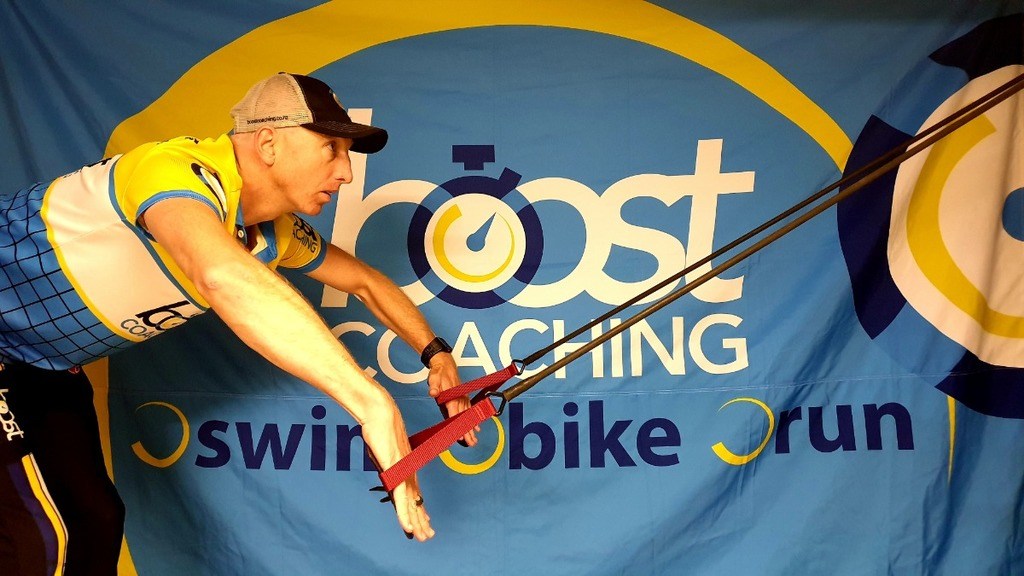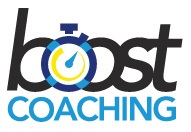Improve your Swimming – Dry Land Training Program with Stretch Cords

Guest Post by Andrew Mackay from Boost Coaching
When we consider the prospect of the season ahead, whether you are a first timer or a seasoned athlete you want to achieve a good result.
You can do specific swim training at the pool and in the ocean but there is always more you can do.
Elite level swimmers will hit swim sessions (up to 11 times a week) but for most of us 2-4 times is probably more realistic. So how can we potentially short cut our improvement?
There are four areas that need to be addressed at all levels – the difference for High Performance vs Us guys is the access directly to key people to support you in these areas:
- Technical Swim Skills/ Technique
- Training Program
- Strength
- Psychological mind-set, goals etc
What is stopping you from physically improving if we kept your fitness and stroke as it is right now?
Answer = Strength
At the back end of a swim whether it’s 500m, or 5km you want your form to hold with the increase in fatigue.
When you get tired your body and stroke will take the path with the least resistance, so you are more likely slow down if you don’t have the physical strength or muscle memory to hold form.
What is form?
Form is your ability to maintain a strong posture (your body position) a lot of this is through your core. Then it is the execution of movement pattern of the arms both above and below the water that assist you with timing and your ability to drive forward efficiently.
If a component is weak for example the core can’t hold its position then you’ll see swimmers start to create a lot of drag components, which negate any drive forward with the arms and ability to have a relaxed recovery.
From what I’ve seen it’s not uncommon to see swimmers that are physically strong especially in the arms but are weak swimmers because they can’t hold posture and form.
Simple Test
Do a 100m or 400m swim and time each length (25m or 50m) and track roughly what your time is each length is.
I guarantee that you first lengths feel easy because you are fresher and as you fatigue you slow down – but in most cases that fatigue is not just aerobic fatigue – it’s muscular fatigue – you can’t hold the form.
The pressure you put on the water to drive you forward is reduced, and generally you’ll see swimmers starting to fight the water.
Example
Think of it like a speed boat, when a speed boat is going slow it sits low in the water then as it accelerates it lifts and sits higher in the water.
Good swimmers create pressure on the water to help them go faster, so they sit higher in the water and they need strength to provide that consistent level of pressure.
How do we build this strength in the pool?
- In the water you might use tools such as fins for leg strength or paddles and pull buoys for the upper body to create a new level of stress for your body to adapt to.
- Different training sets to help build strength. You can be somewhat limited to the outcomes achieved from this.
How do we build strength out of the pool?
Gyms, classes and personal trainers are another option, if you have a membership and if you find a trainer that knows swimming specifically. Some general Pilates or core type classes would be very useful.
You have another choice if you like simple! Simple means:
- Accessible with minimal cost
- Can do anywhere and anytime
- Fits in with your life and training
- Specific to the sport you are training for
Using stretch cords with paddles you can practice:
- Good technique with much greater resistance than water. Set up a mirror or have your camera and video on to check form and actions (you can’t do that in the water)
- Focus on smaller aspects of the stroke that you can’t easily do in the water. For example the catch and push, etc
- Focus specifically on other muscle groups important for swimming
a. Biceps, Triceps, Lats, Core…… the list goes on!
When should I do this?
If you can do this on top of your swim training in the pool you’d benefit significantly from doing this as the swimming will provide the aerobic component that is very important.
So you could break your training cycle into 3 week blocks and an option could be that you complete
- Week 1& 2 – you complete 2 x 45 min dry land sessions
- Week 3 – you complete 1×45 min dry land session
Throughout the week you could complete 2-3 smaller workouts which are just 15-25 min to reinforce some of the key actions or some simple core type exercises.
What should I do?
So the stretch cords offer a component to the workout that is swimming specific and then look to combine other parts to it as well like core strength.
- Download 15-30min basic workout using only the swim cords
- Complete a more complex 45 min Workout
3. A wide range of other dry land exercises as below (no stretch cords required)
At the bottom of this post you’ll see another option from the team at Boost Coaching – press play and follow along (done for you)
Enjoyment from Success
Success isn’t always about winning, it’s about creating a better version of yourself and challenging yourself to improve. On finishing an event individuals that are prepared are rewarded with the sense that they could do more, go further, were in control and feeling stronger. This sense of achievement is the reward from doing the smaller things and possibly taking the training path less travelled.
Good luck with your swimming and see you on the inside for some workouts.
Get Some stretch Cords
If you need a pair of stretch cords check out the Ocean Swim Store. They have a great set for sale that includes build-in hand paddles to help you main your form throughout the exercises.
Comprehensive Online Program

The team at Boost Coaching have built an online program that you can follow along with to help you with your strength – use the code NZOceanSwim to get 25% off the full membership option for the first 20 people until the end of Sept 2020.
